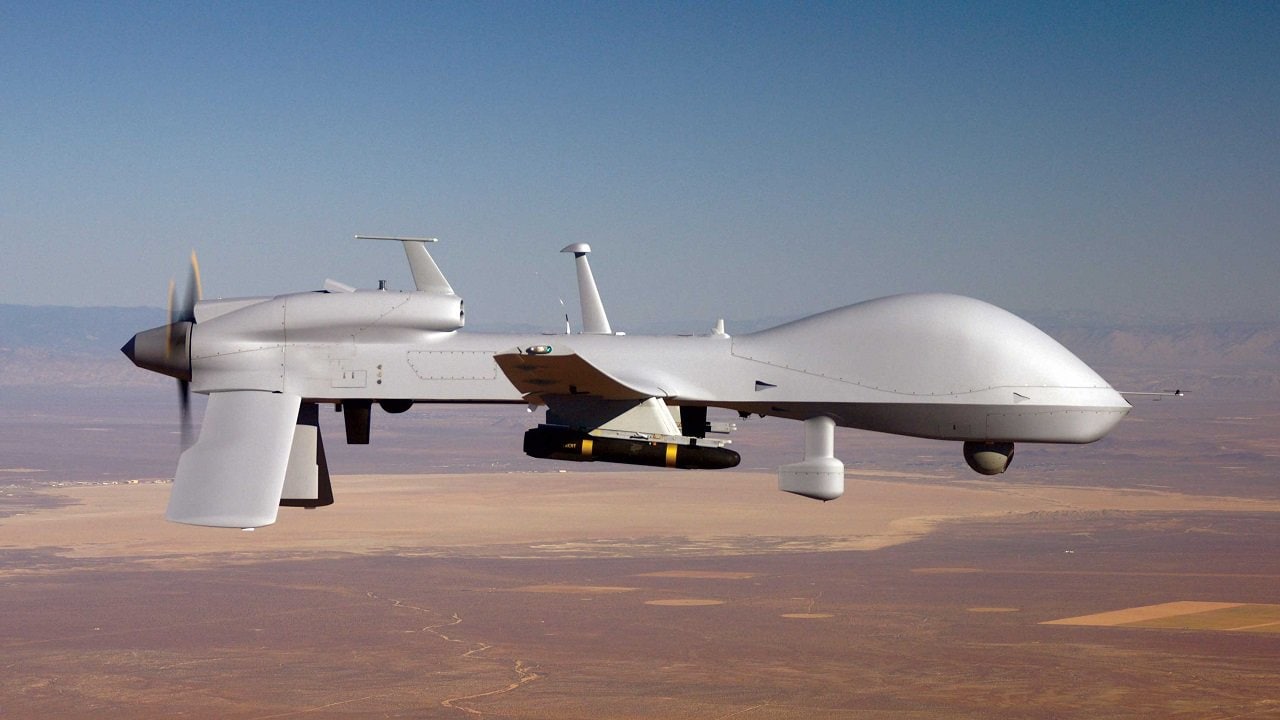It has taken months. Just what is the hold up on the United States sending MQ-1C Gray Eagle drones to Ukraine? The Pentagon was supposed to conduct a study on this and deliver its findings to Congress, but now a bipartisan group of lawmakers is demanding Secretary of Defense Lloyd Austin speed up the process to export the unmanned craft to Volodymyr Zelenskyy’s forces.
What Is the Situation?
Seventeen Democrats and Republicans authored a letter of inquiry into the situation to the Pentagon on September 22. The main issue is that the U.S. military does not want the combat drone to fall into Russian hands, should it get shot down or re-directed to land. The technology behind the Gray Eagle is precious.
It’s Worth the Risk
That’s understandable, but time is of the essence. The risk management study is necessary, but the MQ-1C Gray Eagle could make a difference on the battlefield now and help the Ukrainian counteroffensive in the northeastern and southeastern regions of the country.
House Members Enter the Fray
The Members of Congress, led by Reps. Marcy Kaptur (D-Ohio) and Brian Fitzpatrick (R-Pa) pointed out that the precarious situation is not helpful to the momentum that Ukraine is already enjoying. Still, advances have slowed down this week and Ukraine always looks to maintain an edge in order to destroy Russian tanks and armored vehicles better.
“There continue to be delays in delivering Gray Eagle systems to Ukraine despite urgent requests from Ukraine’s Minister of Defense Oleksii Reznikov and ambassador to the U.S. Oksana Markarova,” the lawmakers wrote in the letter. “While important, thorough risk assessments and mitigation should not come at the expense of Ukrainian lives.”
This Decision Has Taken Months
This process dates back to April and has observers wondering what could have been if the Gray Eagle had been delivered months before. But the Pentagon has countered back, stating that the United States has sent intelligence, surveillance, and reconnaissance unmanned vehicles to Ukraine such as the Puma and Scan Eagle. The military has also exported Switchblade suicide drones.
Now Is the Time to Adopt a Stance
The signatories of the letter make a logical point – decide on the Gray Eagle yay or nay, so the Ukrainian military can pursue other drones from allied countries if the final answer is no. The drone’s manufacturer, General Atomics, has even promised to train Ukrainian operators on the unmanned system free of charge.
MQ-1C Gray Eagles Have Many Attributes
The Gray Eagles offer a better payload, higher endurance, and loitering ability than earlier drones such as Reapers and Predators. The Gray Eagle has an improved engine with greater horsepower for increased range compared to other systems. There is enough room for 575 gallons of fuel and more than a 550-pound payload.
Armed With Hellfires Plus an Excellent Suite of Sensors
The Gray Eagle can carry four Hellfire missiles. It has a ceiling of 29,000 feet and a top speed of 150 knots. The range is 2,500 nautical miles. It has at least a 27-hour-long endurance. The payload includes an electro-optical/infrared sensor with a laser designator and a synthetic aperture radar.
MQ-1C: Multi-mission Unmanned Craft
Not only does the Gray Eagle launch Hellfire missiles, but it can detect IEDs, conduct recon missions, protect convoys in overwatch mode, and carry out communications relays to other aircraft. It also has an automatic takeoff and landing system.
The time is now for the Gray Eagle. Ukraine cannot wait to get it. The Pentagon needs to decide, one way or another. Combat drones have been indispensable in Ukraine. The Gray Eagle offers many advantages. Ukrainian operators will learn quickly how to run it and activate its diverse range of mission sets. All the United States has to do is load them on a C-130 and head to Kyiv. Congress is right to make inquiries and maintain the political pressure on the Department of Defense to send the combat drone soon.
Expert Biography: Serving as 1945’s Defense and National Security Editor, Dr. Brent M. Eastwood is the author of Humans, Machines, and Data: Future Trends in Warfare. He is an Emerging Threats expert and former U.S. Army Infantry officer. You can follow him on Twitter @BMEastwood. He holds a Ph.D. in Political Science and Foreign Policy/ International Relations.

